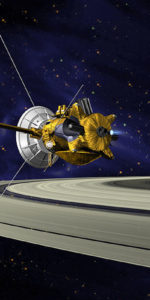
Space Florida and the NASA Florida Space Grant Consortium sponsored the first Space Flight Payloads Workshop at the Florida Solar Energy Center in Cocoa, Florida this week. The high-tech conference started with a Skype cell phone call from Dr. Alan Stern, director of the Florida Space Institute. His opening comments served to welcome guests to the workshop.
Fourteen companies & universities pitched their products in hopes of having customers purchase sub-orbital time in space. Orlando-based Omega Envoy went much further than sub-orbit. Its representative, Joe Palaia, was selling space on their rover to the Moon for $1.6 million per kilogram.
“Many of us on the Omega Envoy team were inspired to follow careers in aerospace by the Apollo Program,” said Palaia. “If everything goes according to plan, we hope to be able to get HD imagery of the footprints the astronauts on those missions left behind.”

This workshop covered a wide spectrum of services available to potential clients. A team from the University of Central Florida (UCF) displayed collision experiments relating to dust particles hitting optical instruments. These experiments will be conducted on parabolic fights lasting approximately 20 seconds in the micro gravity environment.
Xcor Aerospace Inc. detailed the firm’s rocket plane, the Lynx. The Mojave, California-based company offered its services of three minutes of micro gravity time.
For entities that want hands-on time in zero gravity, Zero-G Corp. offers 13 minute of Z-time, this is accomplished in 30-second increments on the down side of the 45’ parabolic arc as the Boeing 727 aircraft dives.

Sean Mahoney from Masten Space Systems explained that the conceptualization process behind his company’s offerings follow a simple mantra: “dream, design, build and then fly.” Masten is working to have its vertical take-off and landing (VROL) craft, sent to Cape Canaveral Air Force Station’s (CCAFS) Space Launch Complex (SLC) 36 in the near future for testing. This craft takes off from a small concrete launch pad supported by its own landing gear. It is designed to reach sub-orbit, deploy its internal experiments and return to the same area from which it was launched.
Starfighters which is based at Kennedy Space Center’s (KSC) Shuttle Landing Facility (SLF) utilizes F-104 aircraft to deliver payloads. This air show act turned payload delivery system has already begun working with Star Lab and 4Frontiers Corp to launch payloads to sub orbit via the same delivery system – that launched missiles at enemy aircraft in years gone by.
NASA sent representatives working on the NASA Flight Opportunities Program to encourage attendees to continue to bring their concepts and ideas to the space agency.
“We are very excited to hear their ideas once they have their technical information in order,” said Nancy Zeitlin with NASA. “We will then work to see their concepts are channeled to the right agency for partnership agreements – as no single organization will be able to do it alone.”
Moderators included Dr. Jaydeep Mukherjee with the NASA Florida Space Grant Consortium and Space Florida’s Tony Gannon. Both fielded a question and answer session on the workshop. This first workshop was, by all accounts, a success and the parties involved with the event agreed that a second workshop would likely be held next year.





